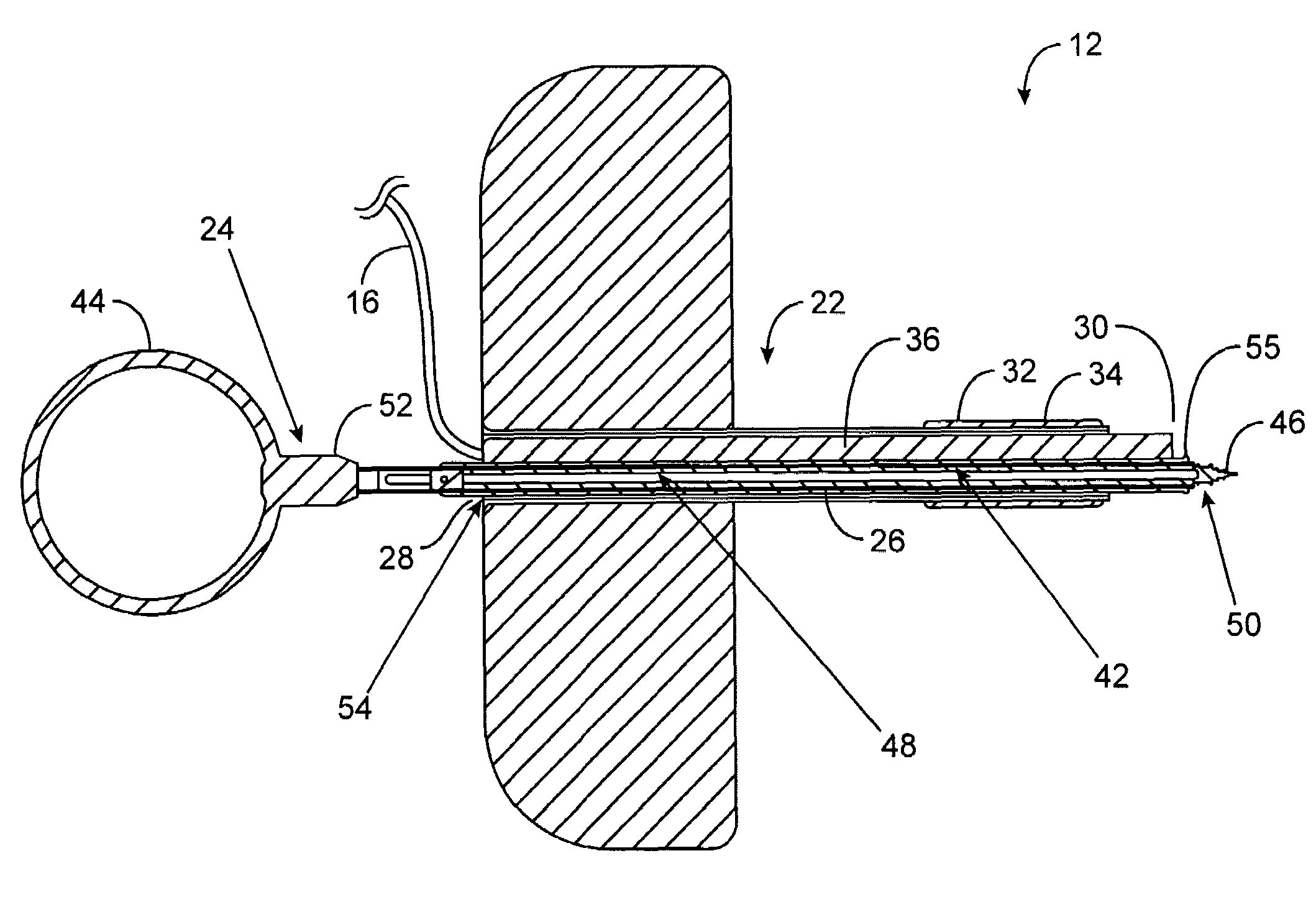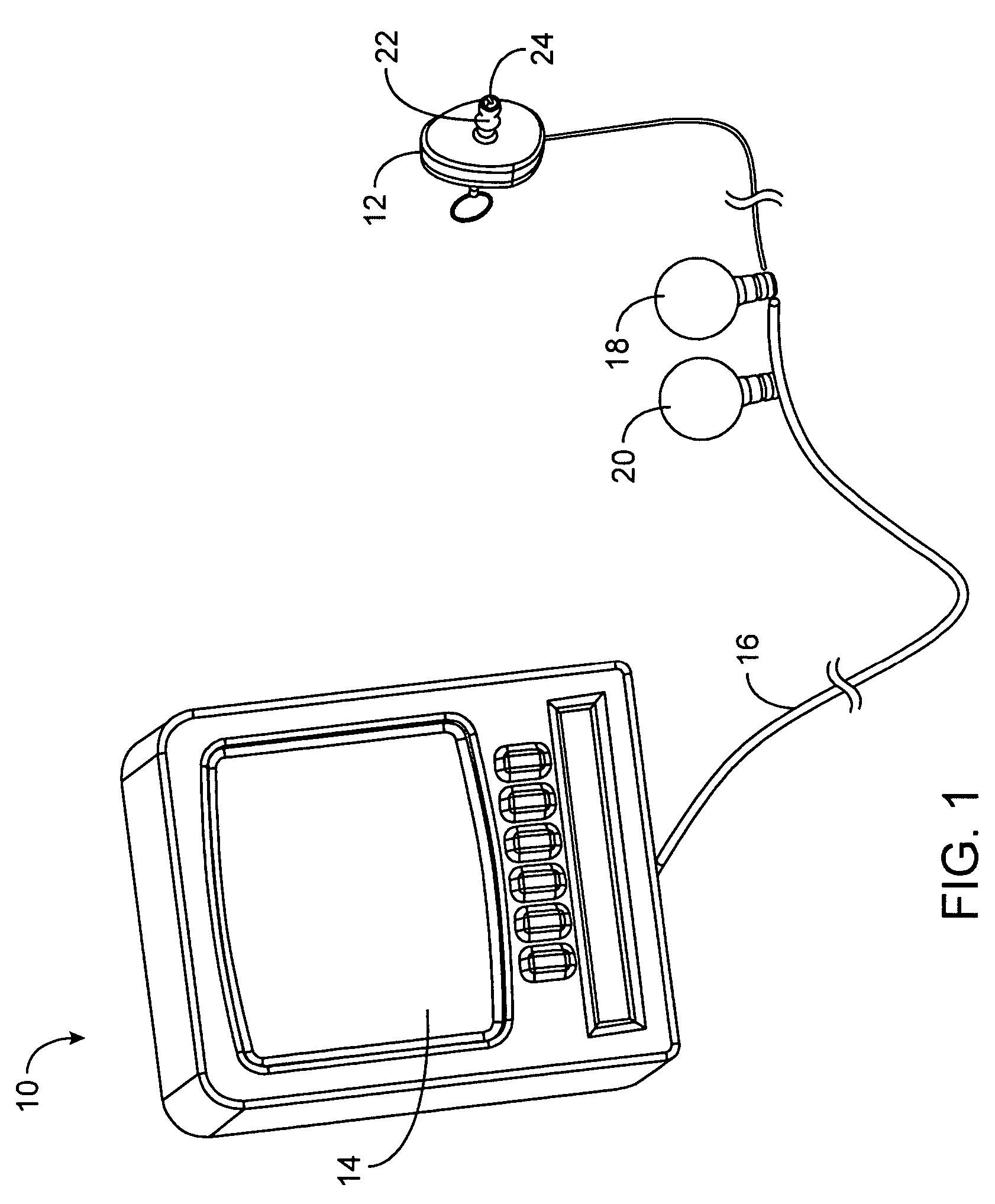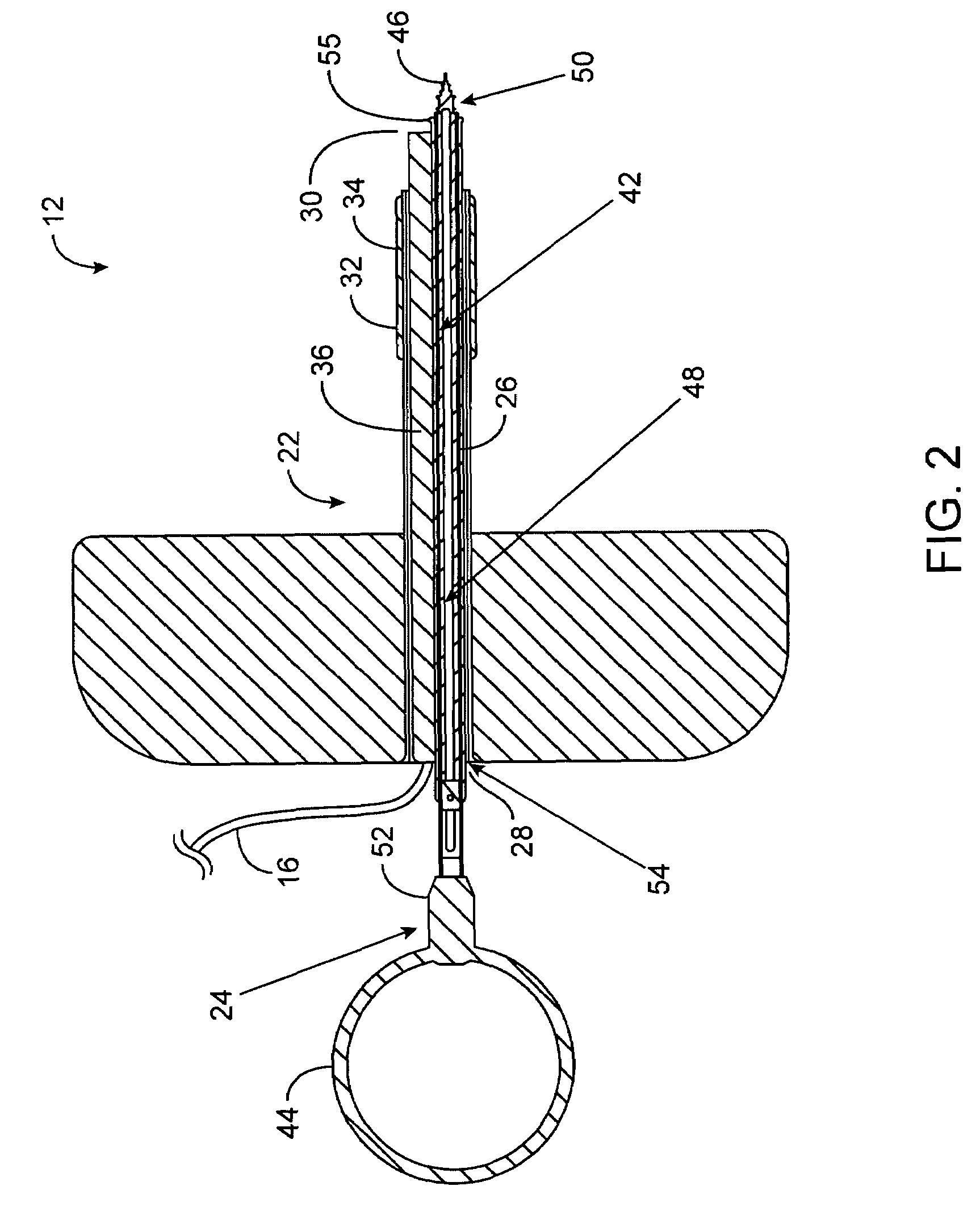Mechanically registered videoscopic myringotomy/tympanostomy tube placement system
a technology of tympanostomy and tympanostomy tube, which is applied in the field of mechanical registration of videoscopic myringotomy/tympanostomy tube placement system, systems, devices, etc., can solve the problems of increasing the risk and cost of tympanostomy tube placement, the risk and cost of out-patient surgical procedures performed under general anesthesia, and the significant portion of the risk and cost of tympanosto
- Summary
- Abstract
- Description
- Claims
- Application Information
AI Technical Summary
Benefits of technology
Problems solved by technology
Method used
Image
Examples
Embodiment Construction
[0039]The present invention generally provides improved devices, systems, methods, and kits for treatment of tissue structures of the ear. Myringotomy, tympanostomy tube placement, and other procedures may be performed using a guide structure to register one or more treatment probes relative to the target tissue structure. The guide structure will often be articulatable, allowing selective registration of the treatment probe with a target region of, for example, the tympanic membrane or eardrum. The guide structure may be supported by, for example, a conformable body, such as a compressible foam insertable into the external auditory canal. Engagement between the conformable body and the auditory canal can maintain a position of the guide structure so that the guide structure, in turn, maintains an orientation of the treatment probe. Such a lightweight guide structure may be mountable to the patient, allowing stabilized videoscopic imaging from an image capture device supported by th...
PUM
 Login to View More
Login to View More Abstract
Description
Claims
Application Information
 Login to View More
Login to View More - R&D
- Intellectual Property
- Life Sciences
- Materials
- Tech Scout
- Unparalleled Data Quality
- Higher Quality Content
- 60% Fewer Hallucinations
Browse by: Latest US Patents, China's latest patents, Technical Efficacy Thesaurus, Application Domain, Technology Topic, Popular Technical Reports.
© 2025 PatSnap. All rights reserved.Legal|Privacy policy|Modern Slavery Act Transparency Statement|Sitemap|About US| Contact US: help@patsnap.com



